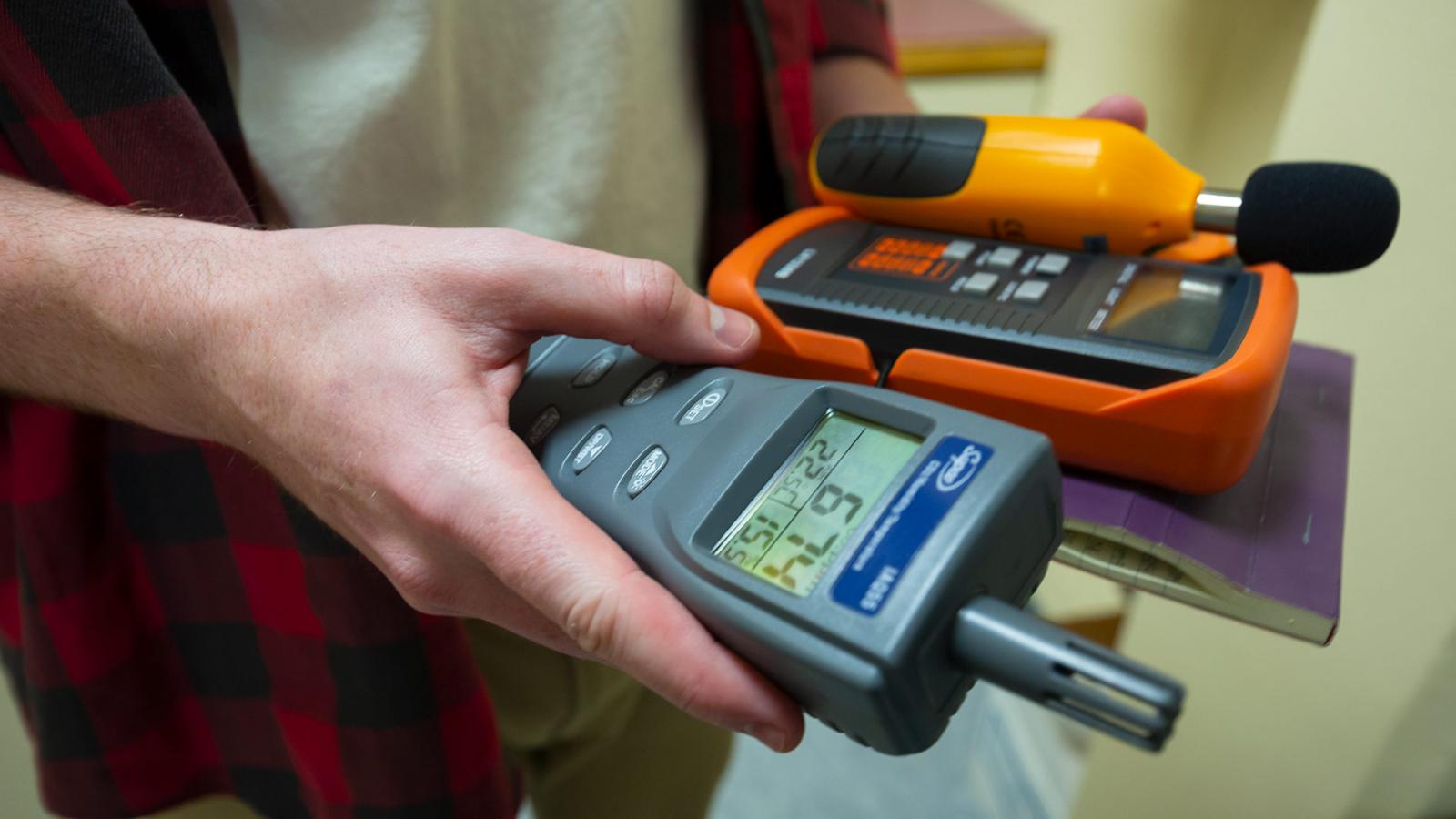It’s no exaggeration to liken University of Maryland, with 50,000 inhabitants, 1,340 acres and 442 buildings, to a small city. Facilities include student residences, classroom buildings, administrative buildings and labs, and when you add them all up, they consume a lot of energy.
Better building efficiency is a major challenge as the university strives to reach its goal of carbon neutrality by 2050, and three researchers in the School of Architecture, Planning and Preservation plan to tackle it by drawing up plans to turn three older structures into models of climate-friendly design.
Over the next two years, Assistant Professor Ming Hu, Professor Emeritus Ralph Bennett and Associate Professor Hiroyuki Iseki will use a $39,000 grant from the University Sustainability Fund to work with a student team and Facilities Management to develop case studies for the Lee Building, the Architecture Building and University House.
They’re aiming for practical, cost-efficient renovation strategies to convert them to net-zero energy buildings—structures that use only as much energy as they renewably produce on site.
The project builds on a feasibility study also funded by the Sustainability Fund in 2017, in which Hu found that successful retrofits for most campus buildings could pay off in energy savings in approximately three years.
“If the world is going to achieve its greenhouse gas emissions reduction goals, then existing buildings need to become much more energy-efficient and shift from using fossil fuels to using renewable energy for heating, cooling and power,” said UMD Sustainability Manager Mark Stewart. “Projects like this are seeking cost-effective solutions to aid that enormous transformation of the global building stock.”
Hu, who published a book on net-zero energy buildings last year, said nearly a third of of UMD buildings are 55 years or older, and consume more energy than newer structures because they were built before efficiency was a priority. Similar to vehicle emissions standards, the building code did not specify insulation requirements until the 1980s.
The two-year project started with a review of an FM-funded energy audit of all buildings on campus, conducted by mechanical engineering Professor Michael Ohadi’s Smart and Small Thermal Systems lab, to identify which buildings were especially wasteful of energy, and thus, good retrofit study candidates.
Hu and her students have started assessing the condition of exterior walls, interior partition walls and roofs, among other things that affect energy use. Students will also measure building temperature and humidity, as well as lighting necessity to get a sense of how much energy is consumed and how much could be saved after a retrofit.
Hu and her team will then draw up a plan to fix underlying problems—poor insulation, wasteful light fixtures or insufficient natural lighting—as well as to install solar electric panels.
Funding has not been allocated to make the plans a reality, but Hu said the research could guide future projects.
“With this information we hope the campus will make more informative decisions,” in renovation projects, she said.
Architecture undergraduate David Milner ’20, who has assisted Hu in studying successful net-zero energy retrofits around the country, said there is a misconception that renovations must be high-cost and high-tech. Often, simple things like adding roof overhangs or putting windows in the right places can play big roles in reducing energy use.
“If people sit up and listen,” Milner said, “the work Professor Hu is doing is really going to change the way people think about construction and design.”

